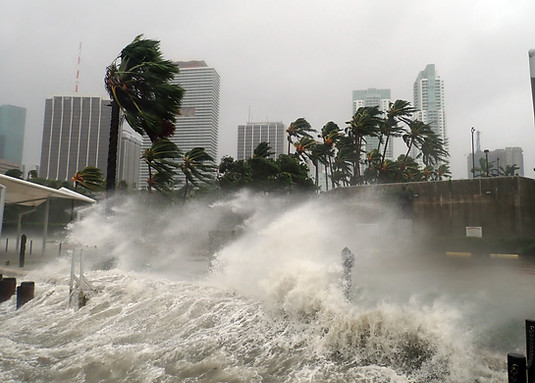
Why Air Quality Monitoring Matters
Many cities rely on one or two regulatory monitors to represent air quality for hundreds of thousands of residents. In reality, air pollution is highly localized:
-
Traffic corridors and industrial areas can have much higher levels than citywide averages.
-
Schools, clinics, transit hubs, and vulnerable neighborhoods often lack direct monitoring.
-
Residents and decision-makers want clear, local evidence to connect policies to health and quality of life.
Cloudsyte Air Monitoring IoT gives municipalities a practical way to:
-
See where pollution is highest and when it spikes
-
Monitor conditions near schools, bus corridors, and sensitive land uses
-
Connect air quality to transport and climate actions
-
Communicate findings transparently to residents and partners
What Cloudsyte Provides
Cloudsyte offers a modular air monitoring solution focused on realistic deployments:
-
Air Quality Sensor Nodes (IoT Devices)
-
Compact, pole- or wall-mounted devices.
-
Measure key pollutants such as PM2.5 (fine particles), PM10, and optionally NO₂ / O₃, plus temperature/humidity.
-
Connectivity via cellular or low-power networks.
-
Designed as directional / management-grade sensors suitable for trends and hotspot identification (not a replacement for regulatory monitors).
-
-
Cloudsyte Platform Integration
-
Each sensor is mapped in Cloudsyte with location, nearby land use, and associated facilities (e.g., school, roadway segment, community center).
-
Air quality readings feed into interactive maps, graphs, and summary views.
-
Data can be grouped by area, time of day, or facility type (e.g., “all school sites”).
-
-
Alerts, Thresholds & Actions
-
Cities can set simple thresholds for PM2.5 or other pollutants.
-
Cloudsyte can raise an alert when levels exceed those thresholds for specified periods.
-
Optionally, alerts can generate internal tasks (e.g., investigate idling at a bus depot, communicate with a school, or log an incident).
-
-
Trend Analysis & Reporting
-
View time-series trends at each location.
-
Compare different sites (e.g., residential vs arterial corridor).
-
Export data and visualizations for council briefings, reports, and community meetings.
-
Cloudsyte focuses on making the data usable, not just collectable.
Typical Use Cases
-
Schools & Childcare Centers
Monitor air quality near campuses affected by nearby roads, industrial sites, or wildfire smoke events. -
High-Traffic Corridors
Place sensors along major routes or freight corridors to understand how traffic patterns affect exposure. -
Environmental Justice & Equity
Install sensors in neighborhoods with higher vulnerability to create evidence-based conversations about investment and policy. -
Climate & Transport Projects
Track air quality before and after measures such as bus fleet upgrades, signal timing changes, bike lanes, or low-emission areas.
How a Deployment Works
-
Goal Setting & Site Selection
-
Clarify objectives: schools, corridors, EJ neighborhoods, or pilots.
-
Identify candidate locations using local knowledge and relevant data (traffic, land use, complaints).
-
-
Sensor Selection & Procurement
-
Cloudsyte works with reliable sensor vendors (or integrates with devices selected by the city).
-
Devices are configured with IDs, coordinates, and metadata.
-
-
Installation & Onboarding
-
City crews or contractors install devices on poles, rooftops, or walls.
-
Cloudsyte verifies connectivity and data flow.
-
-
Dashboard, Thresholds & Training
-
City staff gain access to air quality dashboards in Cloudsyte.
-
Thresholds and optional alerts/tasks are configured.
-
Basic training covers data interpretation, limitations, and appropriate uses.
-
-
Operations & Growth
-
Start with a small network (e.g., 5–20 sensors) and expand as the city learns what works.
-
Cloudsyte supports ongoing adjustments and additional locations as needed.
-

Practical, Transparent Approach
We emphasize realistic commitments:
-
We do not claim to replace regulatory monitors.
-
We do not oversell AI – instead, we focus on clear maps, trends, and simple thresholds.
-
Where appropriate, we encourage co-location of selected sensors near reference monitors or participation in partnerships with universities or agencies for calibration and validation.
Our goal is to give cities practical, actionable air data and integrate it into the broader picture of climate, transport, health, and equity.
Why Cloudsyte
-
Focused on Municipal Needs
We exist to help local governments manage climate, resilience, and sustainability data—not as a generic IoT platform. -
One Platform, Many Signals
Air quality data lives alongside energy, water, emissions, and project tracking, creating a richer view of policy impacts. -
Designed for RFPs & Partnerships
Our approach aligns with common scopes in air quality, climate, and resilience RFPs and can be tailored to local requirements.
